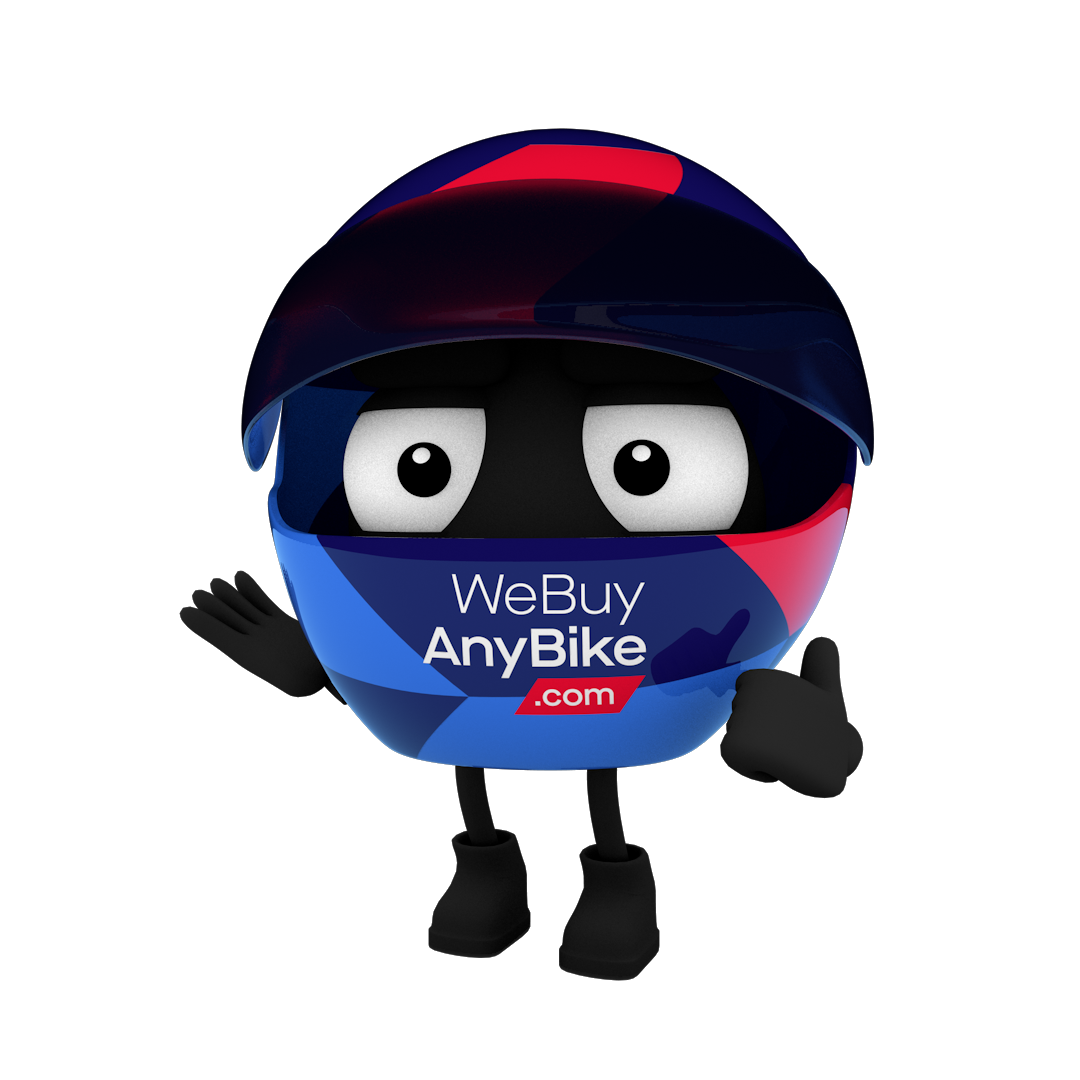Motorbike Miscellany
Tribute To a Legend - Honda's Fireblade
Back in 1992, sportsbikes were very different to those we have today. Barring a few Italian exotica from Bimota and Ducati, the raciest bikes were 750cc fours from the Japanese manufacturers, designed to compete in world superbikes. Alongside these, the 1000cc+ class comprised of big and bulky sports tourers with plenty of power but little handling, while the increasingly important 600s were still at the early stages of development, with their steel frames and bland styling.
Then, out of nowhere, Honda threw a piranha in the tank with its CBR900RR – aka the FireBlade. Suddenly the rulebook was rewritten, at 893cc, it wasn’t designed to be a race bike, rather what Honda considered to be the ultimate design for a performance road bike. With it the 750cc class evaporated and eventually died, as other manufacturers tried to replicate the FireBlade’s success and race regulations changed to reflect what manufacturers sold, rather than the other way around.
Fast and affordable
At launch, the ‘Blade, as it became commonly known, didn’t fit a pre-defined category. Honda had plenty of other sporting options in its range. The CBR600F and RC30 ticked the boxes when it came to race homologation, while the VFR750F and CBR1000F (along with the aforementioned 600) did the job of sporty all-rounders. The FireBlade only had to be fast and affordable for the man on the street, and it was. Suddenly Yamaha’s class-leading YZF750R, and the rest of the 750s, became very hard to sell indeed. At 122bhp (claimed) and weighing just 185kg, the Honda lived up to its claim of delivering 1000cc power in a 600cc package.They were just damn great bikes
It didn’t have a racetrack image, but didn’t need it. While bikes like Kawasaki’s bulky ZX-9R and, to a degree, the Triumph Daytona T595 struggled with a lack of pedigree, punters were buying ‘Blades in their numbers because they were just damn great bikes, the vision of engineers – most notably project leader Baba-san – rather than marketeers. Weight saving was bordering on the obsessive, with conventional forks preferred to the heavier upside-down items and a 16” front wheel (which was lighter than the more usual 17” items, but severely limited tyre choices). Mass centralisation was key and, if anything, the fact that it was never developed as a race bike played into its hands. In addition to allowing it to carry an extra 150cc, things like the carbs and airbox were designed to work straight out of the box, rather than inappropriate items that would only come to life in conjunction with the race kit parts. Over the years, the FireBlade evolved with updates every two years. By 1994 the styling was updated, replacing the dual circular headlamps with a contemporary ‘foxeye’ design, and in 1996 a 1mm increase in bore saw capacity rise to 918cc, with power up by 4bhp. The turn of the millennium saw even bigger changes, with a new short-stroke 929cc motor shooting power up to 151bhp, with weight down to 170kg. Despite the figures, 2000 bike did in many ways see a softening of the ‘Blade, with a longer wheelbase and the adoption of a tradition 17” front wheel. Even though it remained 70cc down on the Suzuki and Yamaha, these bikes were more than capable of holding their own on the road and the track. Another 1mm over bore saw another few horses liberated in 2002, before the end of the CBR900RR and the FireBlade.Period of one-upmanship
Yamaha was the first to really challenge Honda, launching the YZF-R1 to critical acclaim in 1998. It’s reign as the king lasted just one year, when the first Suzuki GSX-R1000 hit the showrooms, and the manufacturers went through a period of one-upmanship that would see lighter, faster and sharper styled new models launched every year.With 750s all but obsolete
Superbike regulations were changed to allow 1000cc fours to compete against the Italian V-twins, firstly in British championships in 2002. Even the world series followed a year later. Today, the only 750cc four sportsbike on sale is Suzuki’s iconic GSX-R750 which, just like the original FireBlade, happens to be a great road bike in spite of, or perhaps because of, not having to conform to race rules. Honda had enjoyed some track success with the FireBlade anyway, scoring superstock and TT wins, but there was no real desire to make an official return to world superbikes, having pulled out, along with the other Japanese in protest at the introduction of the single tyre rule.The CBR1000RR Fireblade finally made the full litre in 2004.
When the adoption of inverted forks saw its transformation to ‘just another’ superbike. These models would go on to cement the Fireblade, its legacy with success on the tracks. Note the small ‘b’ on later versions. Dutch tuners Ten Kate became the de facto factory squad and won the title in 2007 (with James Toseland), while HRC used the British championship (which at the time had free tyre regulations) to enter full works bikes to considerable success.Still the motorbike to beat at the TT
These days the ‘Blade is very much the elder statesman of the class. Along with most of their fellow Japanese manufacturers, Honda has virtually abandoned the increasingly shrinking superbike class. The last major update came in 2008 when a shorter-stroked motor pumping out almost 180bhp was introduced. With the recession biting, it was a far cry from the arms race of 10 years ago. When new models and updates were trotted out every few years. These days it is the Europeans, Aprilia with the RSV1000 and BMW with the S1000RR. That leads the class with Kawasaki. As the sole Eastern representative at the top of the class with its outrageous ZX-10R.The underdeveloped Blade
It has struggled in race tune but still has its moments. It’s still the bike to beat at the TT and remains a force in national championships. But on the world stage, it is only the brilliance and persistence of Jonathan Rea. Along with the innovation of Ten Kate, that helps Honda maintain an occasional podium presence. Gone are the drilled fairings and garish graphics of early bikes, replaced by classy metallics and curvy lines. Surprisingly for a Honda, it lacks the gadgets and gizmos of its rivals. The performance, mindblowing as it is, is delivered in a far more refined manner than its peers. You’d never describe it as an allrounder, or even particularly sensible. But it’s definitely the most grown up choice in the class. Not a bad thing, considering that the only people that can afford to insure litre sports bikes now are the over 40s.Rumours
Rumours persist that Honda will launch a new, V4 engined. An exotic superbike that will put them back at the front of the pack in racing. Will once again give them a real flagship model. Where that puts the Fireblade is anyone’s guess. We’ll happily put a few quid on Honda’s icon being alive and kicking for its 25th anniversary in 2017.Want to buy a Fireblade?
With Honda’s reputation for quality and reliability, Fireblades continue to hold their values well. Early ones are bona fide classics. But like all 20-year-old sports bikes, beware of crashed ones. Ex-racers, stunt bikes and those converted to streetfighters. While the bikes are strong and can take abuse, make sure they are priced accordingly. There should be a Fireblade for all budgets but buyer beware. You get what you pay for. Originality is key with Fireblades. Early ones came in bold colours, not typical of Honda, with the first white, red and blue models. Later ‘Urban Tiger’ designs are still highly coveted. These would be our choice for buyers looking for a modern classic. While early 1000cc models offer a great mix of modern tech and high performance at a reasonable price. If you are looking to sell a Fireblade, value your motorbike here? We collect your bike for free and make sure that all funds are cleared before we leave with your bike.
Helmut
21 Jun 2013
For any blog enquiries, please emailmarketing@webuyanybike.comView all posts by Helmut
